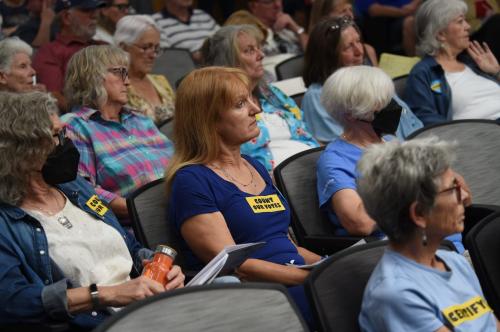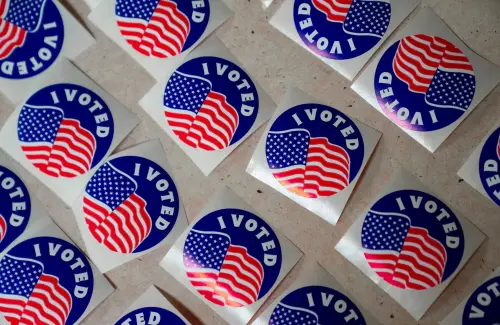The closing weeks of the presidential election have been full of disinformation. Some of it—like Haitian immigrants stealing cats and eating them, for instance—is downright false. But some of it starts with a kernel of truth and either misrepresents the facts, blows small problems into huge ones, or ignores the all-important role of context in interpreting what happened.
Nowhere is this more evident than in persistent claims, coming from Donald Trump and his allies, that the 2024 election will be rife with cheating on the part of the Democrats.
But facts still matter, and interestingly enough, the Heritage Foundation, a right-wing think tank famous for pulling together the controversial Project 2025, has detailed evidence that bears on the claim that there is widespread election fraud in the United States. Experts at that organization have been tracking election fraud cases across the country, and their database is so comprehensive that it lists specific examples and names of people who have been convicted of some kind of criminal action with regard to voting.
Scrolling through the Heritage database at first glance offers the impression that there’s a lot of fraud—but a more careful look reveals just the opposite. To come up with thousands of instances of voter fraud around the country, Heritage staff had to go back decades in time where there have been hundreds of millions of votes cast and a very small number of cases of election fraud have been found, none of which affected election outcomes.
To illustrate just how miniscule fraud is in American elections, we took Heritage’s own data to construct the following table of voter fraud in federal elections—presidential and congressional.
Looking at the seven closest states, we find for instance that in Arizona, Heritage had to go back 25 years, over which there were 36 elections held and 42,626,379 ballots cast, in order to come up with 36 cases of fraud. The percentage of fraudulent votes was a minuscule .0000845%, and no election outcome was altered by ballot fraud throughout that time period. In the highly contested state of Pennsylvania, Heritage data goes back 30 years and covers 32 elections with over 100 million votes cast and found only 39 cases of voter fraud. As the table indicates, this is the case with all the other states where the vote is likely to be close. There were a handful of reported cases of fraud amongst millions and millions of ballots cast, and none of them shifted the election outcome.
Voter fraud is serious, which is why there are many protections built into the system to protect against fraud. In an effort to “pre-bunk” the inevitable accusations of fraud, election officials around the country are working hard to inform the voters on how voting actually works.
And—in one of the least well-known aspects of the vote count—Democrats and Republicans have teams of lawyers, armed with depositions, that are allowed into the rooms where counting is going on. To assume massive amounts of voter fraud, you also have to assume that the Democrats or the Republicans have lawyers who are really dumb or just lazy, and neither is the case.
So, as Darrell West and I argue in our Brookings Press book, “Lies That Kill: A Citizen’s Guide to Disinformation,” in the fight against disinformation, context is important. Are millions of dollars scammed from the Social Security administration each year? Yes. But each year, Social Security sends out $1.5 trillion in benefits.
The bottom line—whether it’s vote fraud or government fraud—facts matter, and isolated instances of fraud do not constitute a widespread trend.
The Brookings Institution is committed to quality, independence, and impact.
We are supported by a diverse array of funders. In line with our values and policies, each Brookings publication represents the sole views of its author(s).








Commentary
How widespread is election fraud in the United States? Not very
October 28, 2024